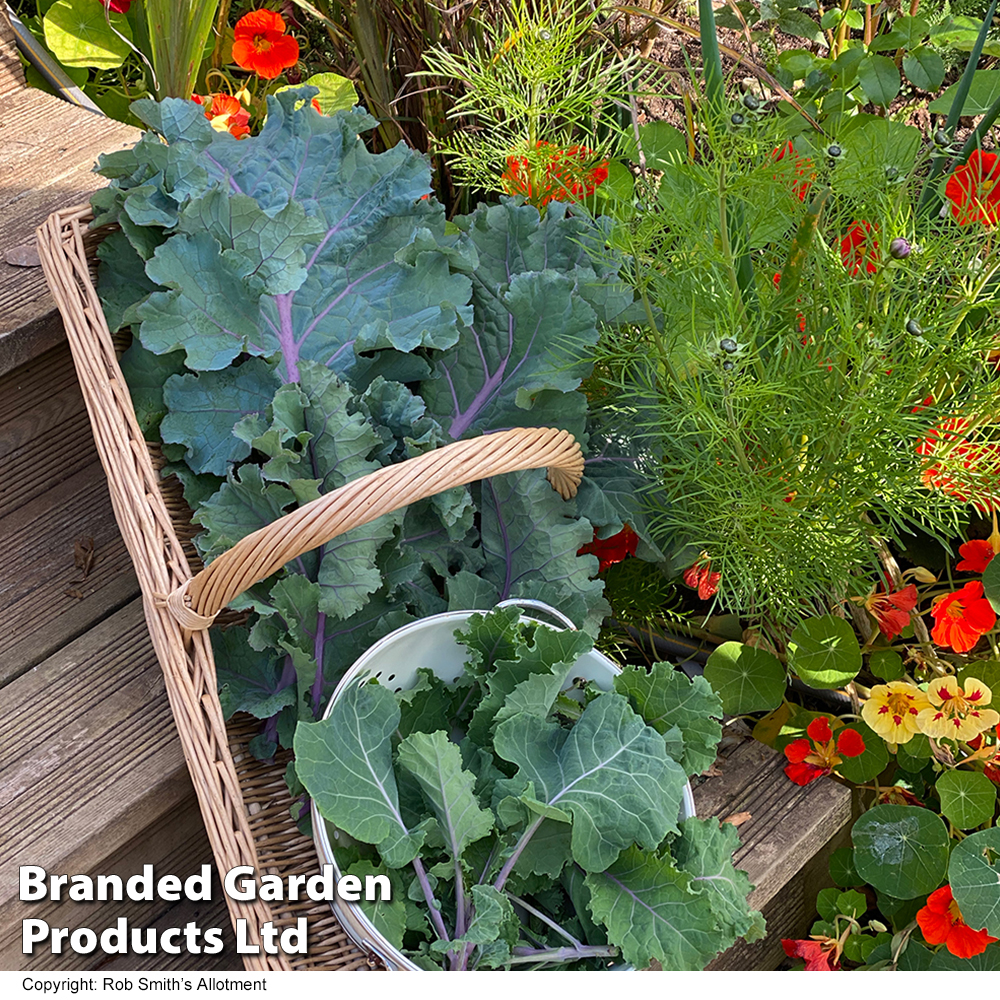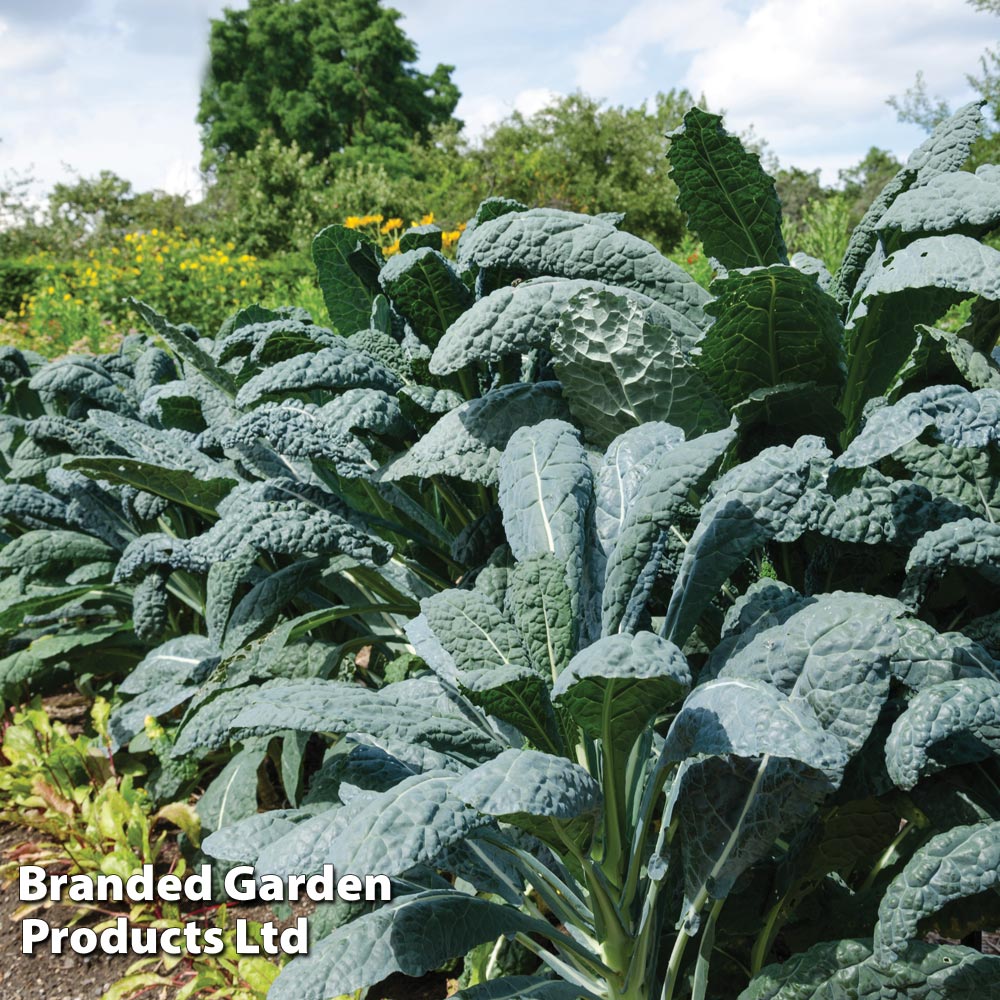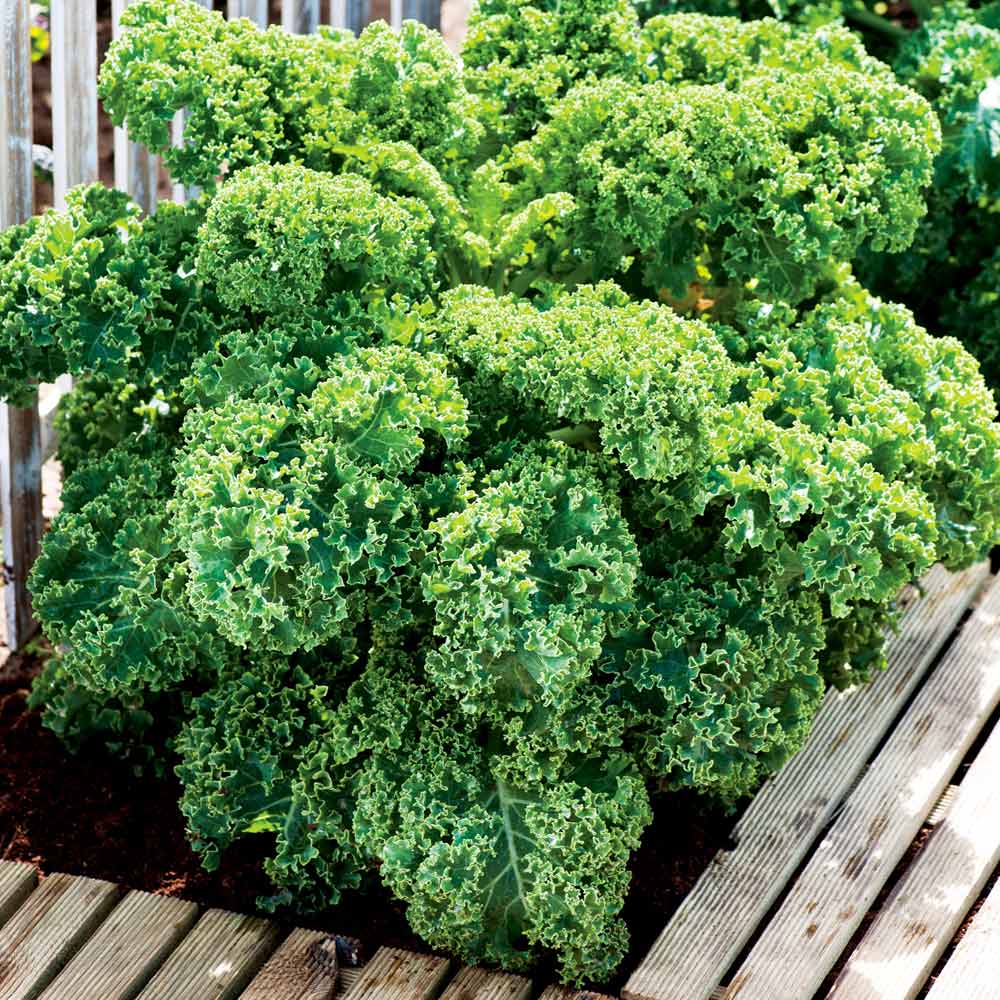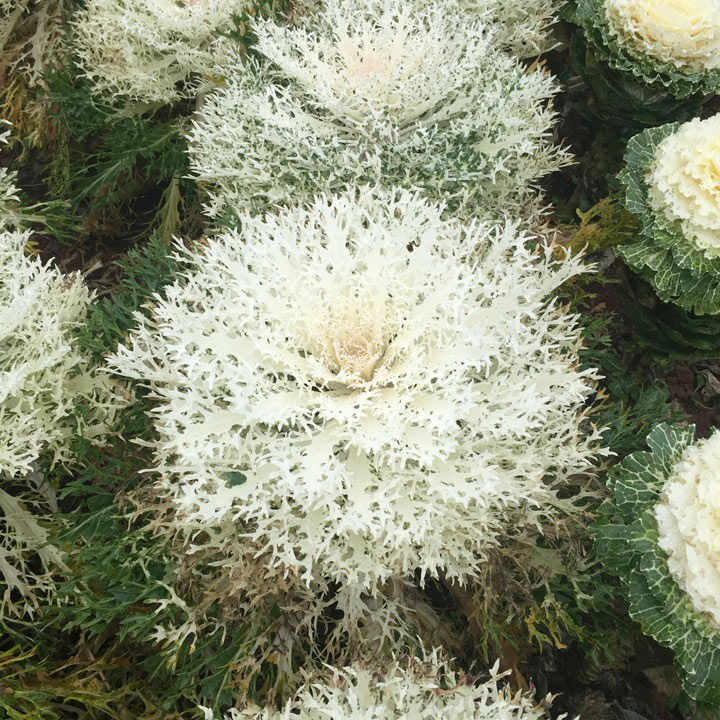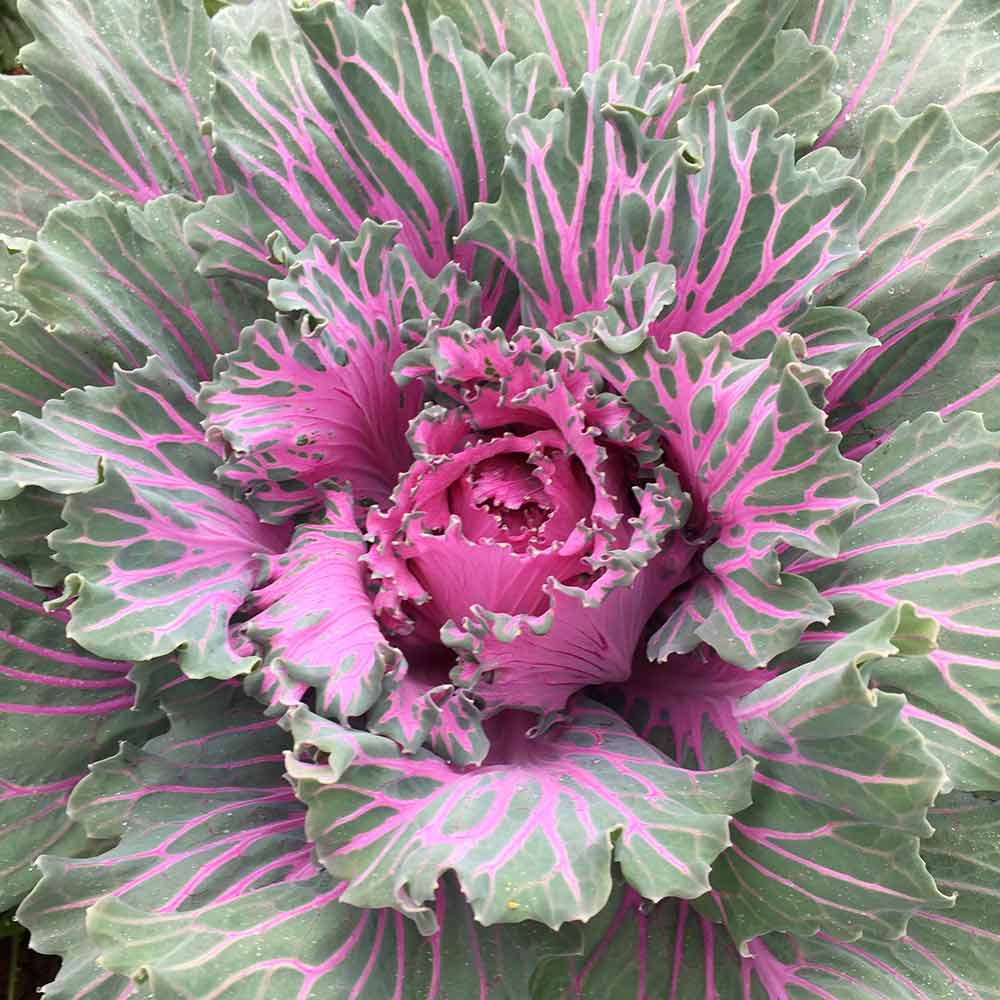This ‘perennial’ kale, once a staple of the 19th century cottagers’ diet, has fallen out of favor simply because the leaves do not store well for sale. This heritage superfood provides tasty green leaves with purple stems all winter, followed by a bonus secondary crop of side shoots in early spring, making it a generous and space-efficient vegetable. Plants will crop for up to five years as a short-lived perennial, but can be easily renewed from cuttings. Charles Darwin was intrigued by the complex parentage of this unusual cross between kale and brussels sprout re-crossed with purple sprouting broccoli. Strong and extremely hardy. Pick young leaves for salads or allow them to mature before cooking. Height: 90cm (36″). Spread: 60cm (24″).
Sowing Information
Sow Kale seed from March to May. Direct sow outdoors into a well prepared seedbed, for transplanting to their final positions later on. Sow at a depth of 1cm (½”) and distance of 23cm (9″) between rows. Kale plants can be transplanted to their final positions approximately 5 weeks from sowing.
Grow kale in firm, rich fertile, well drained soil in sun or semi shade. Prepare the soil in early spring by adding plenty of well rotted farmyard manure to the soil to improve its structure and fertility. Apply lime to acid soils to reduce the acidity and lessen the risk of clubroot. When transplanting kale, plant it slightly deeper in the ground than it was in the seedbed. Plant kale at a distance of 45cm apart with 60cm (24″) between the rows and cover with a protective netting or fleece to prevent attack from birds and insects. Water the plants thoroughly after planting. Pinch out centre stem to encourage side shoots. Propagate by cuttings.

